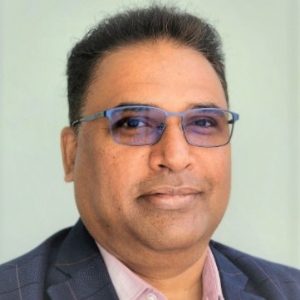Abstract:
Disorders of Consciousness (DOC) are severe acquired brain injuries leading to alterations of arousal, awareness, and responsiveness. Traditionally, DOC comprised three distinct states: Coma (or comatose state), Vegetative State/Unresponsive Wakefulness Syndrome (VS/UWS), and the Minimally Conscious State. Traditionally, DOC comprised three distinct states: coma (or comatose state), vegetative state/unresponsive wakefulness syndrome (VS/UWS), and the Minimally Conscious State (MCS). The MCS can be further divided into MCS “plus” (MCS1) or MCS “minus” (MCS) based on the presence or absence of language abilities. A movement within the field proposes to include the PTCS as the fourth state of DOC. Dopaminergic medicines are among the most studied medicines in DOC. Dopaminergic medicines studied as treatments for DOC include amantadine, bromocriptine, apomorphine, and levodopa (commonly combined with carbidopa). Amantadine initially came to market in the 1960s as an antiviral agent used to treat and prevent influenza type A. Its dopaminergic properties later led to its use as an antiparkinsonian agent. There is now a high level of evidence to use Amantadine to facilitate recovery in disorders of diminished consciousness and some preliminary evidence with Baclofen and Zolpidem.Other pharmacological agents used include Methylphenidate, pramipexole, Bromocriptine, Modafinil, etc., with some evidence. The literature widely discusses the use of different pharmacological medications with dopaminergic potentiation, but what was lacking was a standardized protocol for the use of medications depending on the stages of recovery. The author reviewed various published materials, and there was a general lack of clinical practice guidelines for using these dopaminergic agents to facilitate recovery in disorders of diminished consciousness.The article proposes practical best practice guidelines following a review of existing literature. It uses the Ranchos amigos recovery scale and correlates the recovery process with appropriate dopaminergic pharmacological intervention to facilitate recovery.
Biography:
Vaidya Bala is a Senior Staff Specialist Consultant in Rehabilitation and Brain Injury Medicine at the Rehabilitation Units in Port Kembla and Wollongong hospitals, Illawarra Shoalhaven Local Health District (ISLHD). His qualifications include MBBS, FAFRM(RACP), Fellow of the European Stroke Council, Certified Independent Medical Examiner, Graduate Certificate in Health Professional Education and Leadership, Associate Fellowship with Royal Australian College of Medical Administrators. He is currently the Clinical Lead in Neurological Rehabilitation in ISLHD, Honorary Senior Lecturer at the University of Wollongong, Education Coordinator for Advanced training in Rehabilitation Medicine, Co-chair Pharmacy Committee and Senior Examiner FAFRM(RACP).
Clinical Lead in Neurological Rehabilitation ISLHD. Senior Staff Specialist in Rehabilitation Medicine ISLHD.Honorary Senior Lecturer UOW. Vising Medical officer Shellharbour Private Hospital. Education coordinator for Advanced training in Rehabilitation Medicine-ISLHD. Co-Chair Pharmacy committee-ISLHD. Senior examiner FAFRM(RACP) court of examiners.
Affiliations: Royal Australasian college of Physicians-Faculty of Rehabilitation Medicine. Fellow of European Stroke council. Member-European Society of Obesity Medicine. Members I-international Society of Physical Medicine and Rehabilitation (ISPRM). Member-RMSANZ-Rehabilitation membership in Australia and New Zealand. Member – Academy of Medical Educators University of Dundee
Certification: Fellow of the Royal Australasian college of Physicians with Faculyty in Rehabilitation Medicine. Bachelor of medicine and Surgery. Certification in use of Trans cranial Magnetic stimulation. Certified Independent Medical examiner. Certified Botulinum toxin injector. Botulinum toxin injection for Migraine Headaches-training under Prof Richard Stark. Ultrasound guided injector-Australian Society of Imaging. Basics of Health Economics-Monash Institute of Health service research-2002. Conducting Literature Reviews-Centre for Clinical Effectiveness, MIHSR-2002. Research Methodology-Centre for Clinical Effectiveness, MIHSR-2002.
Accomplishments: Developed a novel Model of care along with a team called I-MAP as Integrated Movement disorders program for ISLHD 2022-2023. Developed a model of care clinic to manage patients with Mild traumatic brain injury and Whiplash associated disorders at Illawarra Brain injury services.2021. AFRM -RACP Virtual site accreditation committee member for Site accreditation of Rehabilitation facilities in Australia and New Zealand. Written policy on Opioids and Safe driving-Austin department of Pain Medicine. Recipient of AFRM Bruce Ford Scholarship 2005. Recipient of European Obesity Medicine Scholarship 2019. Assisted in redevelopment of curriculum and syllabus for Undergraduate core unitsin aged care, Rehabilitation Medicine with DEAKIN University 2014-2015.
Quality and Accreditations: Site accreditation committee member. Virtual site-accreditation of Rehabilitation Facilities. Accreditation of Rehabilitation Registrar training and reports to Committee. Medical Advisory Committee member at Shellharbour Private Hospital. Review of IBIS Performance indicators. Co-Chair ISLHD Pharmacy committee.



